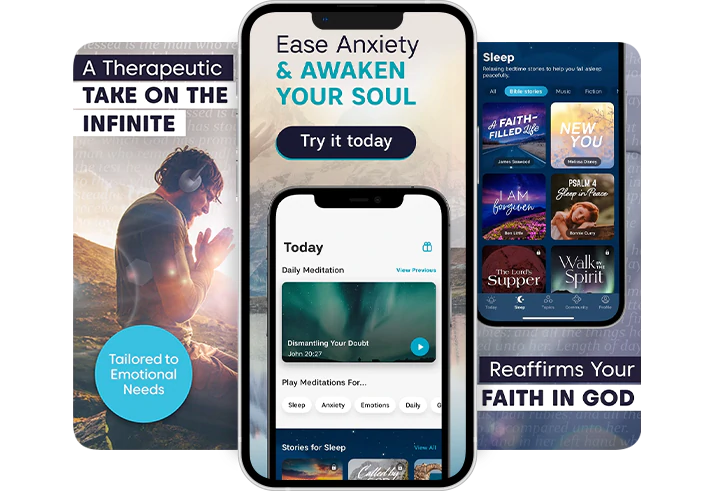AI-Powered Campaign Automation: The Future of Media Buying

Media buying is no longer a matter of intuition – it’s a science. With AI-powered automation at the helm, campaigns have evolved from educated guesses into precision-driven engines that redefine performance, scale, and strategic efficiency.
From the earliest stages of planning – where AI interprets historical data and market signals to forecast the ideal media mix – to real-time execution, where algorithms fine-tune placements, bids, and targeting on the fly, automation now powers every decision that matters.
Today, the industry is witnessing a rapid integration of AI in media buying workflows. According to Accenture, 85% of ad buyers are experimenting with or scaling gen AI for their marketing workflows internally as it is seen as a ‘force multiplier’.
At Moburst, we have already helped brands cut weeks off the planning process, save thousands in wasted spend, and find insights that would have gone completely unnoticed without machine learning. But we also know that AI is not a one-button solution. It only works if you use it with intent.
Let’s break down what AI brings to the table, where it falls short, and how Moburst uses it to deliver campaign results that outperform expectations.
- Looking for help building smarter, more scalable campaigns? Explore our media buying service and see how we drive growth with data and performance at the core.
What AI Is Doing for Media Buyers Today
Targeting That Reacts in Real Time
AI is changing how advertisers segment and reach audiences. Instead of working with general demographics or static personas, AI systems pull live data from websites, apps, CRM platforms, and social feeds. That information feeds into models that predict which types of users are most likely to engage or convert.
It goes far beyond age or location. Search history, device behavior, session patterns, and past engagement all feed into smarter audience profiles. And because this happens in real time, segments keep evolving as user behavior changes.

This allows brands to serve ads that are not only relevant but timed to hit when people are most likely to take action. Campaigns waste less budget and deliver more value per impression.
Personalized Creative That Performs
AI is making it possible to personalize ad experiences at a level that used to be out of reach. Instead of producing one ad for everyone, AI tools can generate and deliver different versions of creative assets depending on who is seeing them.
This is done through dynamic creative optimization, where AI systems match the ad content to each user profile in real time. Copy, calls to action, visuals, and even color schemes can change automatically to reflect the interests or intent of each viewer.
These personalized touchpoints make ads feel more relevant and less interruptive. That leads to stronger engagement, more clicks, and a higher chance of conversion.
Always-On Optimization
Before AI, campaign optimization meant checking performance manually and making changes during scheduled reviews. That approach left room for delays, slow reactions, and wasted spend on underperforming ads.

AI changes that by constantly watching and adjusting live campaigns. It monitors performance across platforms and devices, compares results, and then updates bids, placements, and audience priorities without human input. If a certain channel starts underdelivering, the AI shifts budget to where the return is higher.
This constant feedback loop means campaigns are always running at their best possible level. Teams save time, reduce budget leaks, and can trust that their campaigns are not being left behind by fast-moving market changes.
Not sure if your campaigns are running at their peak?
Let our media buying experts analyze and optimize performance in real time
Smarter Budget Control
One of the biggest strengths of AI is how it handles budget allocation. Media buyers used to make these calls based on spreadsheets and past experiences. Now, AI looks at everything in real time and makes faster, data-backed decisions about where to spend and when.
AI can move budget between campaigns and platforms depending on traffic volume, engagement levels, and current conversion rates. It can even run projections based on seasonal shifts or behavioral trends.
That means brands spend more money where it counts and avoid overspending on low-value impressions. It also improves forecasting accuracy and helps marketing teams meet performance goals with less financial risk.
Built-In Protection Against Ad Fraud
AI also helps reduce the impact of fraudulent clicks, fake traffic, and low-quality ad placements. It detects patterns that point to non-human behavior, such as bots generating fake clicks or impressions, and flags or blocks them before they cost your campaign money.

It can also monitor where your ads are showing and stop them from appearing on websites or apps that are low quality or potentially damaging to your brand. This is especially useful in programmatic advertising, where placements happen at high speed and scale.
Using AI to manage fraud helps protect both your budget and your brand reputation. It ensures your ads only reach people who are real and relevant.
Clearer Decision-Making Based on Data
One of the most valuable shifts AI brings is moving decision-making away from gut instinct and toward data. With constant access to live campaign data, marketers can make changes faster and with more confidence.
This reduces reliance on assumptions or outdated reports. Instead, AI helps teams act based on what is happening right now, not just what worked last month. It gives brands a competitive edge by helping them stay agile, adjust quickly, and avoid wasting budget on tactics that no longer work.
Wasting budget on low-performing channels?
Moburst builds data-driven media strategies that maximize your spend
What AI Still Can’t Do
AI is powerful, but it is not perfect. There are still areas where human insight and strategic direction are needed.
Lack of Visibility into AI Decisions
Many AI platforms do not explain how decisions are made. This can make it hard to understand why an ad was pulled, why spend shifted from one platform to another, or why certain segments performed better.
This kind of opacity, often called the ‘black box’ problem, can be frustrating for media teams that need clear attribution and accountability. It also limits how much you can learn from campaign data when you cannot see what the system is doing behind the scenes.
Less Human Control
Automated systems can sometimes make decisions that overlook brand voice, creative tone, or business priorities. If campaigns rely too much on automation, they risk losing the nuance and strategy that only people can bring.
AI should not replace human judgment. It should support it. Keeping experienced media buyers in the loop ensures campaigns stay aligned with broader brand goals and customer expectations.
Privacy and Compliance Risks
AI uses a large amount of data about user behavior to power smart targeting and personalization. This raises ethical and legal questions around consent, data collection, and compliance.
Privacy laws such as the GDPR and CCPA place strict limits on what can be collected and how it is used. Brands need to be transparent, cautious, and up to date with how data is handled, especially as regulations evolve.
Using AI responsibly means balancing performance with privacy and making sure user trust is never compromised.
What Comes Next
The future of media buying is heading toward greater integration with technologies like augmented reality, virtual experiences, and immersive ad environments. AI will play a major role in powering these formats, helping brands understand user behavior in new contexts and deliver content that feels native and timely.
As campaigns become more interactive and less linear, AI will help marketers predict where attention will go, place ads in more meaningful ways, and shape digital experiences that feel personal instead of generic.
Moburst’s Approach: Using AI for Real Performance
At Moburst, we do not just use AI because it is trendy. We use it where it actually improves outcomes. That includes smarter targeting, campaign adjustments, real-time budget optimization, and creative testing. But we always pair automation with expert input.
Recognized as one of the top media buying agencies, we help high-growth brands reach the right users with maximum impact.
Case Study: How We Helped Abide Win With Campaign Automation
When working with Abide, a leading Christian meditation app, we leveraged AI-powered campaign automation to drive efficient user acquisition at scale. By implementing automated rules and machine learning models across Apple Ads and Google platforms, we optimized budget allocation and bid strategies in real-time based on performance signals.

AI tools helped us dynamically adjust targeting and creative combinations to match user intent, improving ROAS while reducing manual intervention. This approach allowed us to focus on high-level strategy while the automation handled thousands of micro-adjustments daily – leading to a significant lift in conversions and overall campaign efficiency.
Ready to move beyond guesswork?
Our expert team blends AI with real strategy to hit your growth goals
Frequently Asked Questions (FAQs)
AI automation brings machine learning into the media buying process. It replaces manual planning, bidding, and optimization with software that makes faster and more accurate decisions based on real-time data.
Audience segmentation is the process of dividing users into groups based on shared traits or behaviors. This helps advertisers deliver more relevant and targeted campaigns to each group.
Dynamic creative optimization, or DCO, uses AI to automatically generate and serve different ad versions to different users. It tailors ad content to match each viewer’s profile and behavior, improving engagement and conversion rates.






